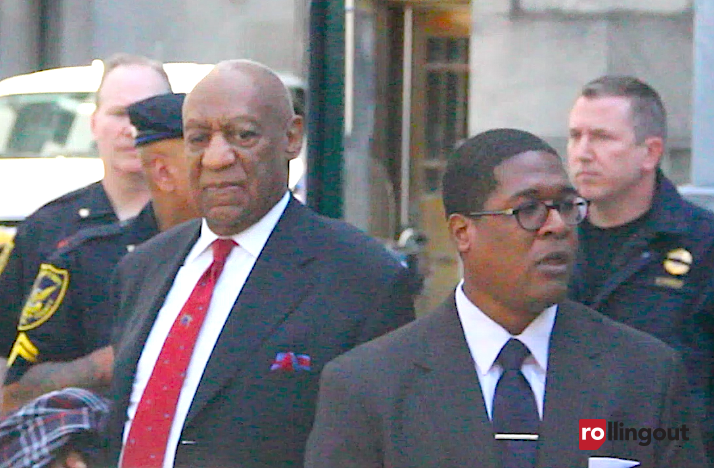The Supreme Court has declined to hear challenges to local ordinances that establish buffer zones around abortion clinics, delivering an unexpected victory for reproductive rights advocates despite the court’s 6-3 conservative majority. By refusing to take up cases from Carbondale, Ill., and Englewood, N.J., the justices have effectively preserved a 25-year-old precedent that permits restrictions on how closely protesters can approach clinic entrances.
The court’s decision not to intervene allows these local buffer zone laws to remain in place, maintaining protections for patients and staff who have reported increased harassment since the court overturned Roe v. Wade in 2022. Legal experts had widely anticipated that the current court might revisit and potentially overturn this longstanding precedent given its recent willingness to reconsider established abortion-related rulings.
The precedent behind buffer zones
Buffer zone laws create designated spaces around healthcare facilities where certain activities are restricted, typically preventing protesters from approaching within a specified distance of clinic entrances. These measures aim to balance free speech rights with the need to protect patients from harassment while accessing medical care.
The legal foundation for these zones stems from a 2000 Supreme Court ruling in Hill v. Colorado, which upheld a Colorado law establishing an 8-foot “floating buffer zone” around individuals within 100 feet of healthcare facility entrances. That decision came in response to escalating violence against abortion providers, including the 1994 murders of two clinic workers in Massachusetts.
While the court has narrowed the scope of permissible buffer zones in subsequent cases, it has never fully overturned Hill v. Colorado. This has created a legal framework that lower courts continue to follow when evaluating similar ordinances, despite criticism from some justices that the precedent conflicts with First Amendment protections.
Current cases reflect post-Roe tensions
The cases the court declined to hear reflect the intensifying conflicts occurring outside clinics in states where abortion remains legal, particularly those bordering regions where access has been severely restricted following the end of federal constitutional protection for abortion rights.
- The Carbondale, Illinois ordinance, enacted in 2023, established an 8-foot buffer around healthcare facilities in direct response to growing protests in a city that has seen an increase in abortion providers serving patients from neighboring states with stricter laws. Coalition Life, an anti-abortion organization that describes its activities as peaceful sidewalk counseling, challenged the law but was unsuccessful in lower courts.
- The Englewood, New Jersey regulation, dating from 2014, similarly prohibits individuals from standing within 8 feet of healthcare facility entrances after documented disturbances outside a local clinic. Anti-abortion protester Jeryl Turco challenged this ordinance, initially winning in federal district court before the 3rd U.S. Circuit Court of Appeals reversed that decision and upheld the buffer zone.
In both cases, the circuit courts of appeals found themselves bound by the Supreme Court’s precedent in Hill v. Colorado, even as they acknowledged that some current justices have questioned that ruling’s validity. The continued adherence to this precedent by lower courts was specifically noted in Justice Clarence Thomas’s comments regarding the court’s decision not to hear these appeals.
Dissenting voices within the court
While the court did not issue a full opinion explaining its decision to deny review, Justices Samuel Alito and Clarence Thomas made their objections known. Thomas wrote that lower courts continue to feel bound by the Hill precedent despite significant criticism from legal scholars and some members of the court itself.
Thomas has previously described the Hill decision as a departure from traditional First Amendment principles, arguing that it unfairly restricts the speech of those attempting to dissuade women from obtaining abortions. Similarly, Alito has indicated his willingness to reconsider this precedent, viewing it as inconsistent with other free speech rulings.
The reluctance of other conservative justices to join this call for reconsidering Hill surprised many court watchers, particularly given the court’s broader willingness to revisit and overturn longstanding precedents in the abortion context, as demonstrated most dramatically by the Dobbs decision ending federal constitutional protection for abortion rights.
Balancing competing rights and interests
The tension surrounding buffer zone laws reflects the complex balancing of competing constitutional interests. Proponents argue these measures serve compelling government interests in public safety, unobstructed access to medical facilities, and protection of patient privacy without unduly restricting speech.
Reproductive rights advocates point to documented instances of intimidation, threats, and harassment as justification for maintaining these protective perimeters. They note that protesters remain free to express their views from a slight distance, preserving their First Amendment rights while preventing direct confrontation with patients in potentially vulnerable emotional states.
Opponents counter that these laws unconstitutionally restrict political and religious speech in traditional public forums like sidewalks. Anti-abortion groups like Coalition Life maintain their activities constitute peaceful counseling and education, not harassment, and argue that the buffer zones prevent them from effectively communicating their message through conversation or literature distribution.
Broader implications for abortion access
The court’s decision not to revisit buffer zone laws comes amid significant national uncertainty regarding abortion access following the Dobbs ruling. With abortion policy now determined at the state level, clinic protections have taken on renewed importance in states where the procedure remains legal.
Legal experts note that the preservation of buffer zone precedent provides a degree of stability for clinic operations in an otherwise turbulent landscape. Healthcare providers in states maintaining abortion access have reported increased demand from out-of-state patients, creating heightened tensions outside facilities and making protective measures increasingly relevant.
For abortion rights advocates who have faced numerous setbacks at the Supreme Court in recent years, the decision represents a rare victory, albeit one achieved through the court’s inaction rather than an affirmative ruling. The practical effect is the continued availability of a legal tool that clinics and local governments can use to manage protest activities.
Geographic disparities in access and protection
The buffer zone cases highlight growing geographic disparities in both abortion access and the legal protections surrounding it. Clinics in states like Illinois that border regions with strict abortion bans have become focal points for both increased patient volume and intensified protest activity.
Carbondale specifically has emerged as a critical access point for patients from southern states with near-total abortion bans. The city has seen new clinics open specifically to serve this regional need, creating what some observers describe as “abortion deserts and islands” across the American landscape.
This concentration of services in particular locations has in turn led to concentrated protest activity, prompting local governments to implement protective measures like the challenged buffer zones. The result is a patchwork of varying protections for patients seeking reproductive healthcare, dependent on local ordinances and their enforcement.
Looking ahead to future challenges
While the current challenges to buffer zone laws have been rejected, legal experts anticipate continued litigation on this issue. Anti-abortion organizations have demonstrated persistent commitment to challenging these restrictions, and future cases may present factual or legal distinctions that could persuade the court to grant review.
Changes in the court’s composition could also alter the trajectory of buffer zone jurisprudence. Though the current conservative majority declined to revisit Hill, future appointments might shift the balance on this specific issue, as has occurred with other aspects of abortion law.
For now, localities retain authority to implement reasonable buffer zone protections around healthcare facilities, provided they conform to the guidelines established in the Hill precedent and subsequent cases. This continued legal framework allows for some predictability as communities navigate the complex intersection of free speech rights and healthcare access in a post-Roe landscape.
The Supreme Court’s unexpected restraint in this instance suggests that despite its willingness to dramatically reshape abortion jurisprudence, the current court may exercise more caution when addressing peripheral issues that implicate broader First Amendment principles extending beyond the abortion context alone.
















